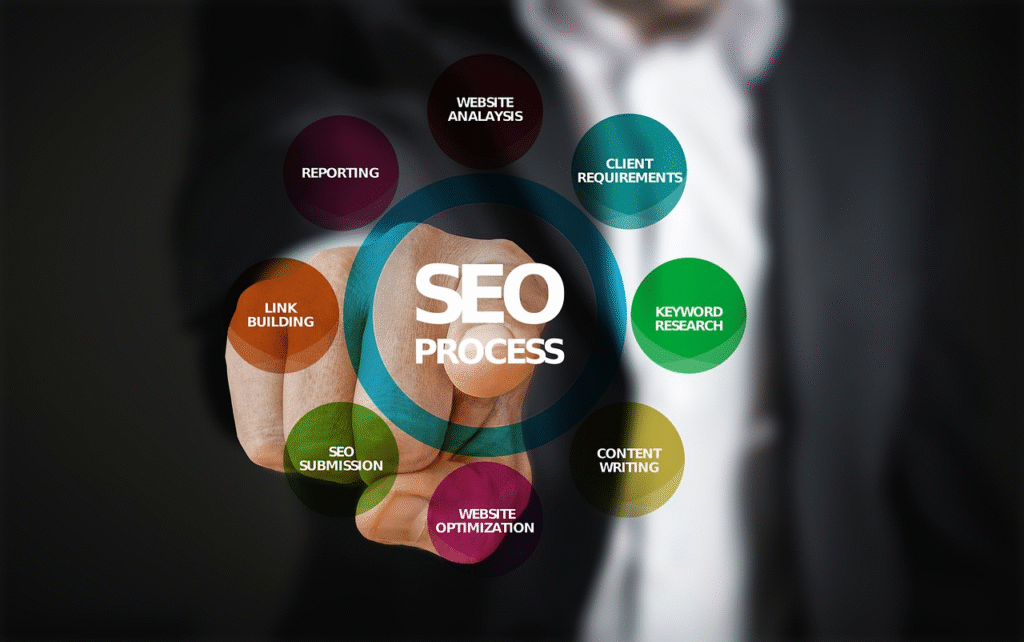In a competitive digital landscape, businesses depend on paid search strategies to drive traffic, generate leads, and increase sales. A SEM agency plays a pivotal role in this process, helping brands maximize returns on ad spend while targeting the right audience. But not all agencies are created equal. A high-performing SEM agency possesses a distinct set of capabilities that drive measurable success. This article outlines the defining traits of top-tier agencies and provides actionable insights on how to implement these strategies.
Deep Expertise in Keyword Strategy
The foundation of any SEM campaign is a well-researched keyword strategy. High-performing agencies don’t just rely on generic tools—they combine data from Google Ads, third-party keyword platforms, and first-hand insights from client performance. They understand that targeting high-volume keywords isn’t always the best approach; instead, they balance search volume with commercial intent and competitiveness.
To execute this:
- Start by using tools like SEMrush, Ahrefs, and Google Keyword Planner to gather keyword data.
- Identify long-tail keywords that show transactional intent (e.g., “buy ergonomic office chair online”).
- Group keywords by funnel stages and match them with specific landing pages or ad groups.
- Continuously refine the keyword list based on search terms reports and campaign performance.
For example, a SaaS client might benefit more from targeting “project management tools for remote teams” than the broader “project management software.”
Mastery of Ad Copy and Creative Testing
An agency’s ability to write compelling, conversion-oriented ad copy directly influences click-through and conversion rates. Top agencies apply principles of persuasion, include strong calls to action, and address user pain points in their ads. But the real differentiator lies in rigorous A/B testing.
Execution steps include:
- Create multiple ad variants for each ad group with different headlines, descriptions, and CTAs.
- Test emotional vs. rational appeals to determine what resonates with the audience.
- Use ad extensions (sitelinks, callouts, structured snippets) to enrich the ad copy.
- Monitor performance weekly and pause underperforming variants while scaling top performers.
For instance, a campaign for a fitness app might test “Get Fit Fast – 7-Day Free Trial” against “Personalized Workouts at Home – Try It Free.”
Data-Driven Decision Making
Top SEM agencies are relentless about data. They measure everything—from impression share and quality score to micro-conversions and customer lifetime value. This enables them to pivot quickly, optimize continuously, and make budget decisions that align with business objectives.
Steps to put this into practice:
- Integrate Google Ads with Google Analytics and CRM platforms for end-to-end tracking.
- Set up conversion tracking (form fills, purchases, calls) and micro-conversions (video views, scroll depth).
- Build dashboards using tools like Google Looker Studio to visualize performance.
- Analyze data weekly and create action plans based on trends and anomalies.
For example, if a campaign’s cost per lead rises, the agency might review landing page experience, adjust bids, or shift focus to better-performing segments.
Advanced Audience Targeting and Segmentation
Rather than targeting broad demographics, leading agencies build nuanced audience personas using data and behavior. They use segmentation to tailor ads to different user intents, such as retargeting cart abandoners with promotional offers or reaching new prospects with educational content.
To do this:
- Set up custom audiences in Google Ads using website behavior, customer lists, and engagement metrics.
- Create lookalike audiences from top-performing customers.
- Use in-market, affinity, and life-event audiences for layered targeting.
- Develop different ad creatives for each segment and personalize landing pages accordingly.
As an example, a travel company could segment by frequent travelers, family vacationers, and honeymoon planners, delivering tailored messaging to each.
Proactive Budget and Bid Management
Budget efficiency is a hallmark of high-performing SEM campaigns. Top SEO agencies don’t just set and forget—they actively manage bids and budgets to align with performance trends and campaign goals. They use both automated and manual bidding strategies, depending on the situation.
Execution includes:
- Use bid strategies like Target CPA or Maximize Conversions, depending on the goal.
- Set bid adjustments for devices, locations, time of day, and audiences.
- Monitor daily spend and reallocate budget based on campaign ROI.
- Test bid changes incrementally and observe impact over time.
For instance, if mobile users convert at a lower rate, an agency might lower mobile bids by 20% while increasing desktop bids during peak business hours.
Full-Funnel Campaign Structure
A high-performing agency doesn’t focus solely on bottom-funnel conversions—they understand the buyer’s journey. They create campaigns for each stage: awareness, consideration, and decision, nurturing prospects with the right message at the right time.
To implement:
- Build campaigns targeting broad keywords and display ads for brand awareness.
- Use search ads and YouTube remarketing to engage users in the consideration phase.
- Optimize product listing ads or branded search for decision-stage conversions.
- Create nurture sequences (e.g., email or retargeting) that align with each funnel step.
For example, a B2B software company might run thought leadership content on YouTube to drive awareness and then retarget viewers with a free trial ad on search and display.
Integrated Landing Page Optimization
Even the best ad campaigns will fail if the landing pages don’t convert. High-performing agencies either collaborate closely with the client’s web team or manage landing page creation themselves. They understand how to design for user experience, message match, and conversion.
Steps include:
- Match landing page headlines and visuals with the ad’s value proposition.
- Use clear CTAs, fast load speeds, and mobile optimization.
- Run A/B tests using tools like Unbounce or Google Optimize to test layouts and messages.
- Analyze heatmaps and user sessions to uncover friction points.
A health supplement brand, for example, could test a long-form landing page highlighting product benefits versus a shorter, testimonial-focused layout to see which performs better.
Conclusion
A high-performing SEM marketing agency excels in technical strategy, creative execution, and strategic analysis. They work as growth partners, not just service providers. By applying these capabilities—rigorous keyword planning, smart ad testing, real-time analytics, audience segmentation, and conversion-focused design—agencies can drive lasting results for their clients in a fast-changing digital environment.




